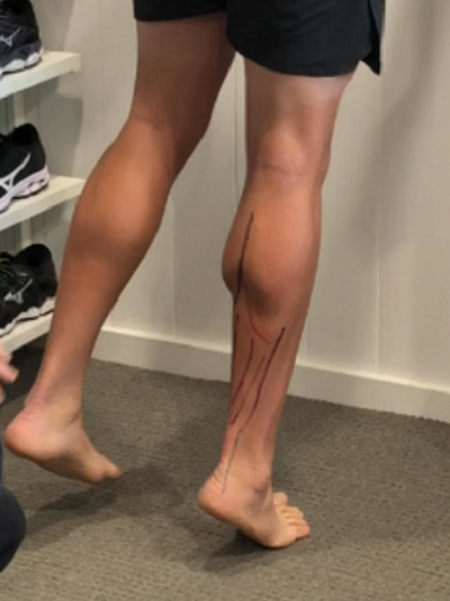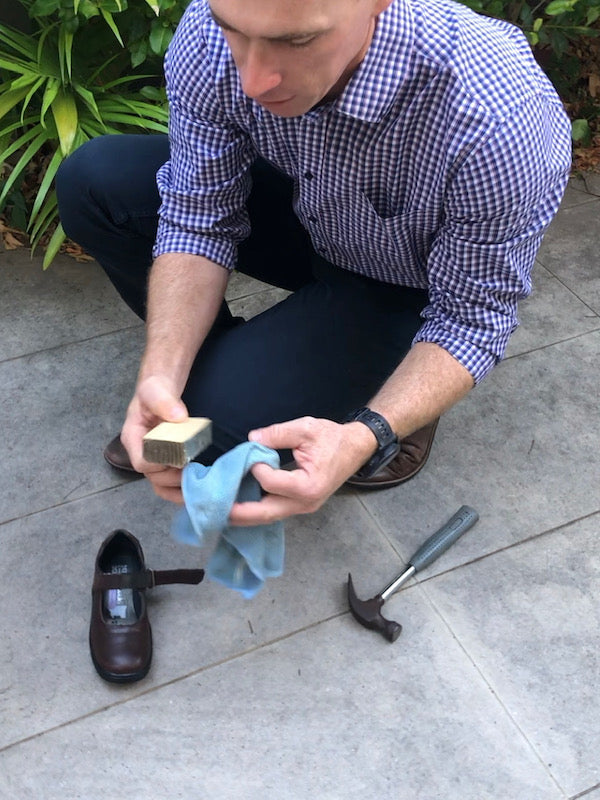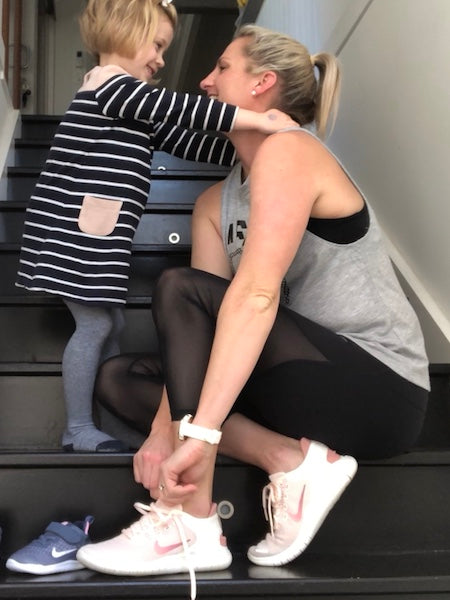Have ever been told that you have tight calves, stiff ankles or tight Achilles tendons? Here is an accurate way to test if this really is inhibiting your gait and contributing to lower limb injuries.
Tight Calves, Stiff Ankles and Short Achilles
These are very common issues for runners, sports people and the general population. The overall result of these is a lack of bending of the ankle during gait and this has important implications for recurrent injuries as well as affecting run technique and performance. One of our sports podiatrists shows how to accurately self test if you have this issue and what can be done.
What is ankle equinus?
The term ankle equinus comes from 'walking like a horse' and refers to a lack of forward bending of the ankle joint. People with an ankle equinus will have an earlier heel lift with gait (the heel comes off the ground early when stepping forward), the front of the foot will load up more and some runners will run more on their toes (like a horse!).
How do I know if I have stiff ankles?
Traditionally, we would use the 'knee to wall test', however free smart phone apps with digital inclinometers allow us to measure angles very accurately and efficiently. The problem with the knee to wall test is that it doesn't allow for different length legs, feet and other variables. The inclinometers directly measure how far the ankle joint can bend forward as this is what is required for efficient gait.
Apple Iphones and Ipads come with a Compass app that actually has a built in inclinometer. Open the Compass app and swipe the screen left to reveal the inclinometer.
Compass Iphone app screen:

Swipe left to reveal incinometer:

There are plenty of free inclinometers or angle finders on the app stores that are free such as these:

What are the 4 possible causes of stiff ankles (equinus)?
Tight gastrocnemius muscles. These muscles are the top part of your calf and are made up of the medial (inside) head and the lateral (outside) head of the gastrocnemius. These continue down and join onto the Achilles tendon and if they are tight, they pull on the Achilles more and stop the ankle joint bending..
Tight soleus muscle. This lower, deeper muscle sits under and below the gastrocnemius muscles. It is a broad, flattened muscle that also attaches onto the Achilles tendon and can restrict ankle bending.
Short Achilles tendon. If the Achilles tendon itself is naturally short, this will pull on the heel more and prevent the ankle joint bending far enough.
Restricted ankle joint. Some people naturally have stiff ankle joints, particularly higher arched feet, that simply won't bend far enough forward for adequate gait. This is a bone/joint issue of the ankle joint that prevents the bending. Previous ankle sprains will also commonly stiffen ankle joints to prevent bending.
How does this contribute to pains?
There are two main ways that stiff ankles can contribute to injury.
The first is the extra tension on these structures as they are stretched to their limit with gait. This will mean that they are being pulled to their limits which strains, compresses and tears some of these structures.
The second is the increases in work load of these areas. When the ankle can't bend forward enough, there isn't enough forward lean with running. Leaning forward is necessary to push more horizontally rather than vertically. Stiff ankles lead to a more vertical drive and a more 'up and down' bouncy gait rather than a 'long smooth' gait. This extra up and down movement means more work for the lower leg structures as they are working against gravity.
This image shows good ankle range allowing forward drive:

This image shows poor ankle range and limited forward drive:

How does this affect run technique?
Inadequate forward lean with running results in a more vertical drive, as shown in the above picture. The easiest analogy is to imagine throwing a ball. If the ball is thrown more vertically, there is less horizontal. If the ball is thrown at the perfect angle to get the most horizontal travel for the effort, then this is most efficient. This perfect angle for running seems to be 34 or 35 degrees for the majority of people.
This ideal angle that is required can change depending on the running speed, inclines and type of activity.
The impact of poor ankle flexibility is a 'bouncy gait' which is referred to as a high vertical oscillation where lots of energy is wasted as up and down energy fighting against gravity. This wasted energy is obviously less efficient for runners.
A reduced stride length and shorter flight time will also result as there is less horizontal travel. These shorter strides result in a higher cadence as the legs need to turn over more to get the speed up and ultimately a runners pace is negatively affected.
What can be done to help?
Release tight structures. Tight muscles and tendons need to be stretched, rolled and released. Stiff ankle joints can sometimes be mobilized to increase their flexibility. Working with an experienced physiotherapist to increase this natural range of ankle movement is of great benefit. This can take some time and some runners will never get enough of the natural movement that they need.
Adding height under the heel instantly reduces the angle required for gait.
Increasing the pitch (also called the drop) of a shoe is the first place to start. There are many shoes which are problematic for this problem that have a lower heel drop such as the Nike Free, race shoes and other minimalist shoes. Some alternative brands of shoes may have thick soles for cushioning, but they still have a very low heel compared to the front of the shoe. The Hoka and Altra brands are examples of this being a low drop shoe and contribute to these pains and problems. The most popular technical running shoe brands such as Asics, Brooks, Mizuno and the running range of Nike shoes have higher heels to help with this type of problem.
Adding heel lifts which are small foam wedges to the inside of the shoe allows the heel height to be customised to the correct height. We will remeasure the amount the ankle can bend forward with the shoes on and heel lifts in place to ensure that we are getting our minimal range of movement of 34 degrees.
In some extreme cases, we will add extra material into the sole of the shoe to allow for extremely stiff ankles, however this is quite rare.
See Our Sports Podiatrists
This is one of the many small problems that we see in our Brisbane sports podiatry clinic, so book online here or call to make an appointment with one of these experienced sports podiatrists for a full assessment and accurate treatments to resolve pains and improve performance.




1 comment
Paul
This was really useful because it explained the “why” rather than simply address the fact.
Knowing how to relieve the pain is only one step. Knowing why the pain is there is much more helpful to ensuring recovery and most importantly prevent it actually recurring in the future. Thank you. PG
This was really useful because it explained the “why” rather than simply address the fact.
Knowing how to relieve the pain is only one step. Knowing why the pain is there is much more helpful to ensuring recovery and most importantly prevent it actually recurring in the future. Thank you. PG